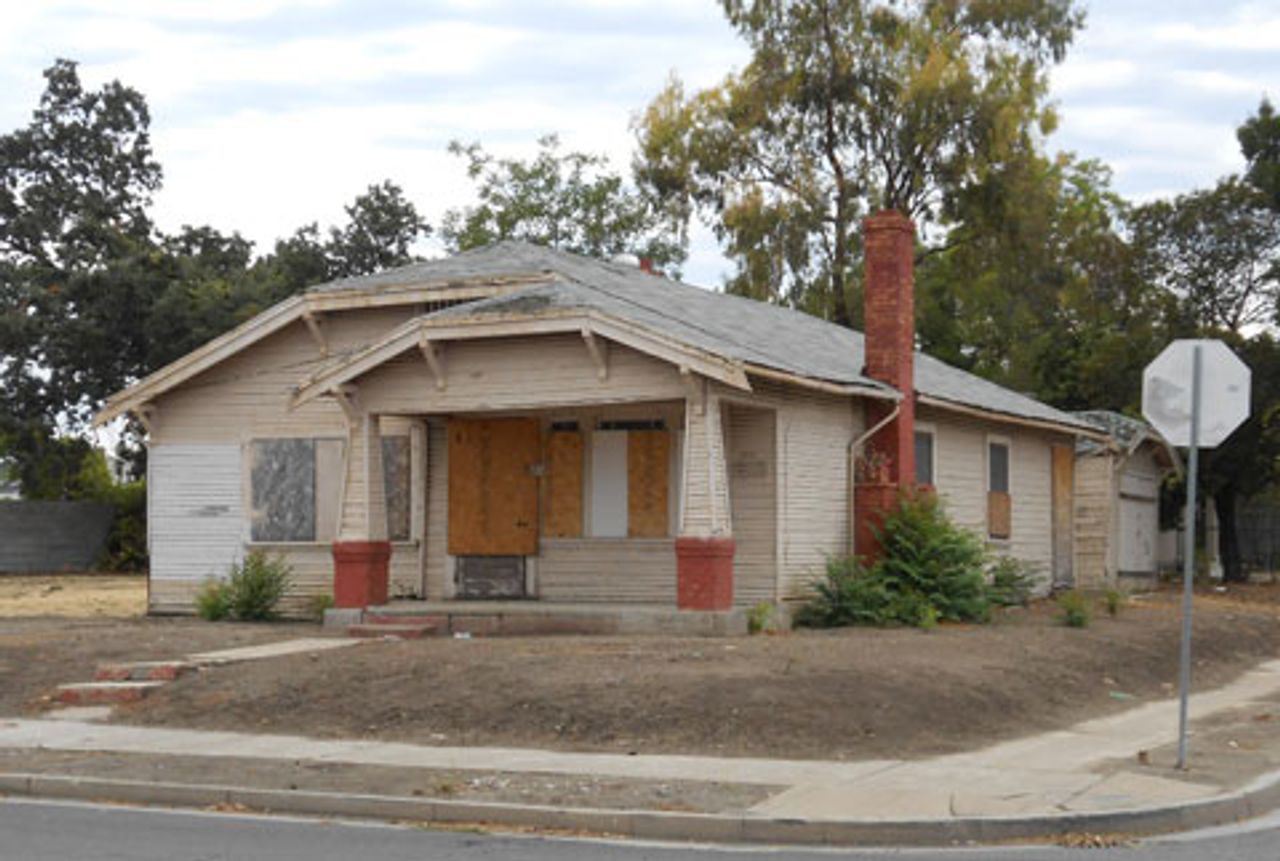Following the announcement earlier this month that San Bernardino, a city of 210,000, will file for bankruptcy, more California cities face the prospect of becoming insolvent. Once again, the solution will be to cut pension and health care costs, and to fire city workers and reduce public services.
San Bernardino is the third city in the state to file for bankruptcy within a month, following upon Stockton and the resort town of Mammoth Lakes. An additional eight cities, including Fairfield, Arvin, El Monte, Grover Beach, Lancaster, Monrovia, Riverbank and Tehachapi have officially notified the municipal bond market that they are facing “significant financial hardship” this year, according to Matt Fabian, managing director of Municipal Market Advisors.
Fairfield faces a deficit of $8 million for the 2013-2014 fiscal year. After years of cutting social services, the city has now placed a ballot initiative for November that would increase the sales tax. David White, director of finance and assistant city manager for Fairfield, told the San Francisco Chronicle “We are at the point now where we cannot cut any more from our budget without severely impacting services and the quality of this community.”
The fact that so many cities have declared bankruptcy in such a short time frame has raised fears that a wave of such bankruptcies are coming. Stanton, a city of 28,000 in Orange County, faces an $8 million deficit and will be insolvent within four years. The city already has undergone years of budget cuts. The city recreation department has been eliminated, the City Hall staff has been reduced to just 23 people and, in 2010, when city council members were running for reelection unopposed, the city canceled the election in order to save a mere $32,000.
Stanton now plans to cut its police and fire departments, which account for 77 percent of the city’s expenses. City council members want to cut $1.3 million from an $8 million policing contract with the Orange County Sheriff’s Department, which has agreed to a cut of only half of that amount. Stanton officials have now said they will seek police services from another agency if the Sheriff's Department refuses to agree to the entire reduction.
Another city that may be facing bankruptcy is Compton, a working class city of 97,000 residents with high poverty rates located south of Los Angeles. Officials announced recently that the city may run out of money by the end of summer, owing $5 million to debt collectors. A more serious issue is the city’s $43 million deficit that was created by using money from water, sewer and retirement funds to balance the city’s books. Come August 1, a $1.1 million water bond will be due, despite the fact that city has no savings.
Compton Treasurer Douglas Sanders told the city council recently, “We are in some very critical issues, so by Aug. 1, y’all need to decide what’s going to happen—make the bond payments, default on them or go into bankruptcy. For the 20 years I’ve been here, this is about the worst I’ve seen.”
Enormous economic costs have often accompanied municipal bankruptcies. When Orange County filed for bankruptcy in 1994 it had to pay nearly $87 million in legal and financial advisory fees. In 2008, when the city of Vallejo filed for bankruptcy, its legal bills reached $11 million. At that time the city faced a $16 million deficit, which it closed by cutting half the police and fire departments, eliminating grants for arts and recreation programs and cutting road maintenance in the city by 90 percent.
Officials in Vallejo cut upwards of $100 million in health care obligations during its “restructuring.” Benefits for city retirees were cut to $300 a month, down from $1,500 a month in some cases. Despite these draconian cuts, the city was unable to close its deficit and is now spending $4.8 million more than it is taking in and as result, so it will have to ask the police union for more concessions next year.
The main purpose of filing for bankruptcy is to obtain the sanction of the courts to impose huge cuts in wages and benefits on city employees, rip up union contracts, and to slash the benefits for both active and retired workers.
Historically, municipal bankruptcies have been rare in the United States. There have been only 263 cities, counties, and districts to file for Chapter 9 bankruptcy from 1986 to 2011, according to the official U.S. Courts website. Only four California cities have filed bankruptcy in the last 20 years.
The wave of threatened bankruptcies shows that the American financial elite has implemented a new stage in its attack on jobs, wages, social services and pensions. This represents a bipartisan war against municipal and public workers throughout the United States, as both Democratic and Republican politicians alike seek to impose the burden of the capitalist economic crisis on the backs of working people.
It is a lie that the budget deficits are a result of overly generous pensions and social services, as the politicians and corporate media would have it. This lie has already been used to justify recent ballot measures in San Diego and San Jose that limited pension benefits for future and current retirees.
In truth, the state’s budget deficits and unfunded pension obligations are a direct result of Wall Street betting on an expanding housing bubble, the collapse of which resulted in the crash of property values and tax revenues.
The Riverside Press-Enterprise reported: “The city of San Bernardino’s financial woes are a direct correlation to a torrent of foreclosures in the Inland area of Southern California, the national foreclosure tracking firm RealtyTrac said Thursday. ‘Property taxes plunged in San Bernardino because of an avalanche of foreclosure activity during the recent housing bust,’ said RealtyTrac vice president Daren Blomquist.” Stockton is another epicenter of the collapse of the housing bubble.
The claim that simple arithmetic dictates these cuts because “there is no money” is likewise false. The amounts required to cover the budget deficits of cities, as well as near-bankrupt state governments, pale next to the trillions made available to rescue the Wall Street banks and other big financial speculators since 2008.
While Stockton, San Bernardino and other cities are forced to cut social services and public safety, no one is advocating raising taxes on the wealthy, which could easily cover maintaining them. Meanwhile corporate CEOs such as Marissa Mayer at Yahoo rake in hundreds of millions of dollars annually, as do hedge fund chieftains and other financial speculators and parasites. Nothing is made available to maintain the jobs and living standards of public workers or to ensure that aging workers can be secure in retirement.
The crisis of states and cities demonstrates a historic failure of the capitalist system, not just in the United States, but internationally. The same collapse of public finances—and imposition of drastic cuts—is rapidly accelerating as well in regional governments in countries such as Spain and Italy.
The WSWS recently spoke with workers in Stockton, a city of 292,000 people, east of San Francisco. The recent bankruptcy is the largest in US municipal history. Social condition in the city can only be described as desperate as many buildings and lots now lay abandoned.
 Abandoned house in Stockton
Abandoned house in StocktonJoe Sandoval, a Stockton resident explained to the WSWS, “Both my wife and I are retired, so the economic downturn hasn't affected us directly that much, but it still affects our neighbors and friends.” He added, “When these people were hired they were promised a pension. Now, after they’ve already done the work for it, the city is taking it away.”
Another resident, Shawn Maguire told the WSWS “The biggest change in the city over the past few years has been the increase in crime. They’ve laid off police. Also more unemployment means more crime, it doesn't take a genius to see that.”
 Otha Mobbs
Otha MobbsOtha Mobbs, a financial adviser born and raised in Stockton, described the situation facing many people, “A lot of my clients have lost their pensions and healthcare or had their homes foreclosed. It’s not just Stockton doing it though. I see a lot of companies using bankruptcy so that they don’t have to pay their retirees. I have to tell people, ‘don't put all your eggs in one basket.’ You can't really count on them to actually pay your pension.”
Mobbs laid the blame on the banks saying, “The banks pushing sub prime mortgages was really a case of predatory lending. They took advantage of peoples’ lack of knowledge. A lot of these people had no idea how to read a mortgage agreement or what to look for. They trusted the bankers and this scum of the earth took advantage of them.”
The WSWS asked Mobbs what he thought about the need for a socialist party. He said, “I think it's a good idea for workers to have their own party. It really doesn’t seem like the current parties work for the people. People are afraid to take a stand because our economy is based on fear. The middle class doesn't want to take a stand because they’re afraid they might lose. It’s like slavery where they ruled with fear. If the slaves had risen together they could have overthrown the whole system.
“I just got back from New York City, and I learned there about the transit strike they had. Where workers got together and shut down the city. There’s far more workers than bankers.”
